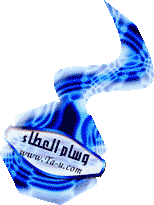dr_ahmed karbalaa
$المدير العام للمنتدى$



العمر : 34
المزاج : طبيعي
علم البلد : 
$الأوسمة$ : 
نقاط : 29718
السٌّمعَة : 0
تاريخ التسجيل : 13/12/2008
 |  موضوع: pediatric orthopedic 3 موضوع: pediatric orthopedic 3  السبت يناير 03, 2009 1:15 am السبت يناير 03, 2009 1:15 am | |
| Skeletal Trauma in Children, Volume Three, 2003 by Neil E. Green Marc F. Swiontkowski [ندعوك للتسجيل في المنتدى أو التعريف بنفسك لمعاينة هذه الصورة]Editorial Reviews From The New England Journal of Medicine, May 7, 1998 In 1955, Walter Blount published his classic textbook Fractures in Children (Baltimore: Williams and Wilkins). His clear descriptions of nonsurgical techniques defined the standard of care for the next 25 years. This 276-page textbook, with its memorable illustrations of nonsurgical procedures, was read and reread by orthopedic surgeons who cared for children with musculoskeletal injuries. Illustrations of radiologic studies reminded readers of the remarkable potential for bone to remodel in children even when displaced fractures were treated without anatomical reduction. During the 1980s, however, a new standard of care for the management of fractures in children began to evolve. Studies found that rigidly adhering to nonsurgical techniques or accepting less-than-optimal bony alignment in certain cases of fracture could increase morbidity and residual deformity, especially in children who had head injuries, open fractures, or multiple injuries. Subsequent advances in surgical techniques have dramatically reduced operative risks and markedly improved the results. Fracture fixation and indirect bony reduction with the use of fluoroscopic image intensification can be achieved through percutaneous incisions. Children whose fractures are treated with newer techniques -- such as flexible and locking intramedullary nails; small, low-profile fixation plates; and lightweight, unilateral external-fixation equipment -- no longer have to endure extended periods of skeletal traction or bulky spica body casts. Shorter hospital stays have resulted. To be sure, the physical outcomes after trauma have improved, but one should not underestimate the social, psychological, economic, and educational benefits of returning children with severe fractures to their homes in a timely fashion. Skeletal Trauma in Children presents the state of the art. Green and Swiontkowski have selected an interesting combination of 19 well-known pediatric orthopedic surgeons and specialists in orthopedic trauma to contribute chapters. Though multiauthored, this skillfully edited book is quite readable, because the chapters are well organized and follow the same format. Each chapter begins by briefly reviewing the anatomy and development of the body region in question. This is followed by a diagnosis-and-evaluation section that gives precise directions for proper radiographic and imaging techniques. The bulk of each chapter is devoted to a detailed and comprehensive discussion of decisions about treatment and techniques that includes the preferences of the author (or authors). Chapter 8 gives the reader a magnificently detailed and comprehensive review of fractures of the hand, wrist, and forearm in children. The illustrations are uniform throughout the book because they have all been drawn by the same two artists. These illustrations and the numerous photographs and radiographs add to the unusually good aesthetic aspects of the book. The scope of Skeletal Trauma in Children extends beyond the full range of musculoskeletal injuries in children. The book also covers the biology of growth and development in relation to trauma (Chapter 1) and the psychological responses of children to trauma (Chapter 4). In the final chapter, the authors present a detailed and well-illustrated discussion of child abuse, including keys to its identification and differential diagnosis -- obviously important for any physician who treats fractures in children. The editors should be complimented on accomplishing their stated goal of providing orthopedic surgeons with a detailed and easy-to-read textbook covering currently accepted treatment. The emphasis in most of the chapters is clearly on operative management, although nonsurgical treatment is described in detail. Perhaps a few more illustrations of nonsurgical reduction techniques, so wonderfully described in the past by Dr. Blount, would have further increased the usefulness of this book for primary care physicians and orthopedic generalists, who are often called on to treat the simpler fractures seen in children. Although this book covers the many sophisticated advances that have been developed since Blount's original textbook, it is every bit as readable and just as valuable. Reviewed by Randall E. Marcus, M.D. Copyright   1998 Massachusetts Medical Society. All rights reserved. The New England Journal of Medicine is a registered trademark of the MMS. --This text refers to the Hardcover edition. Book Description Revised and updated throughout, this pediatric companion to Browner et al.: Skeletal Trauma, 3rd Edition presents practical, focused guidance on managing musculoskeletal injuries in children and adolescents. The text emphasizes the unique aspects of children's fractures in terms of epidemiology, mechanisms, management, and the challenges of treating the skeletally immature patient. State-of-the-art coverage by leading experts in pediatric orthopaedics and musculoskeletal trauma includes growth and development, pathology, complications, child abuse...and almost every possible break from head to toe. Last Edited By: Mars on Saturday, 25-Nov-06 14:02:55 UTC | |
|

